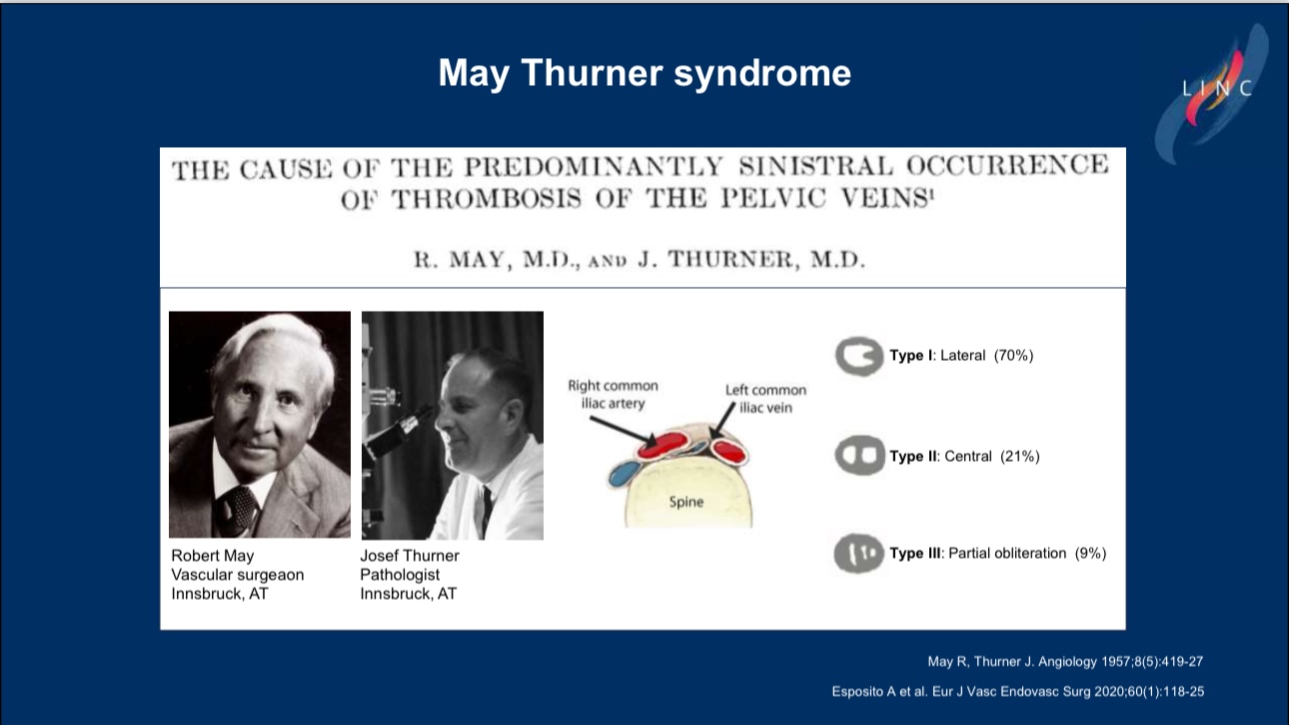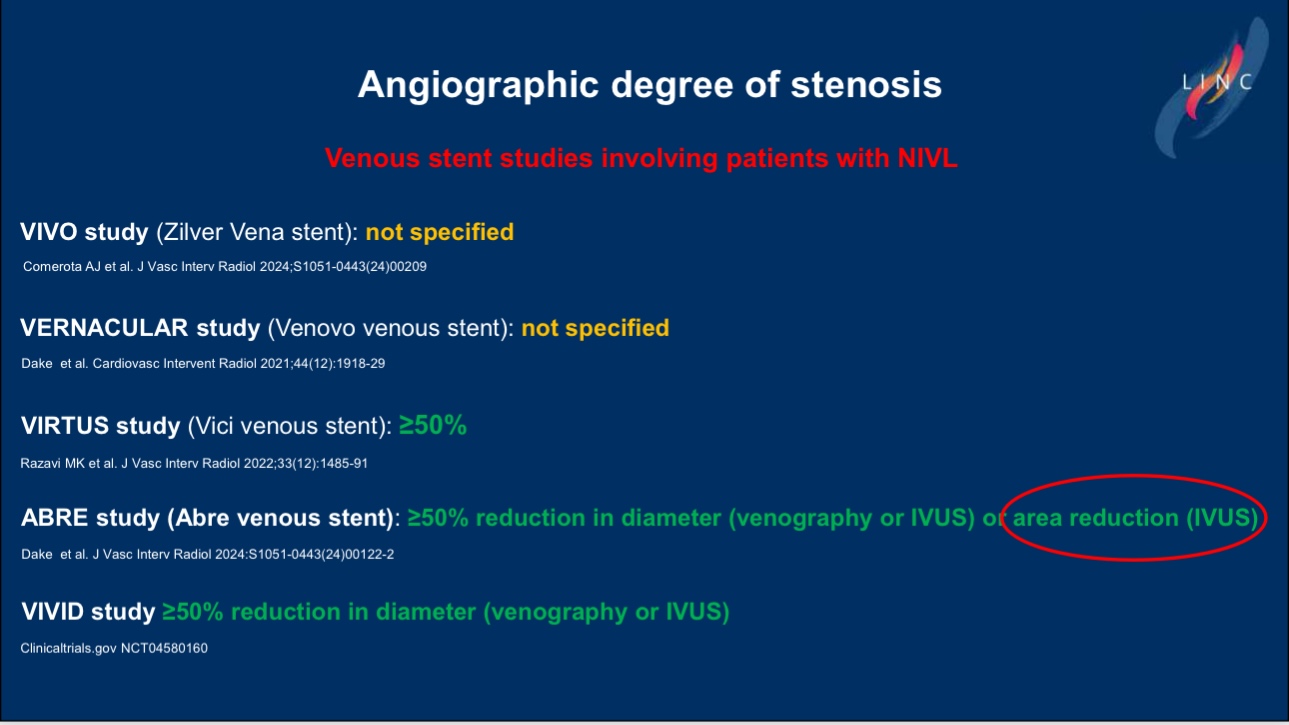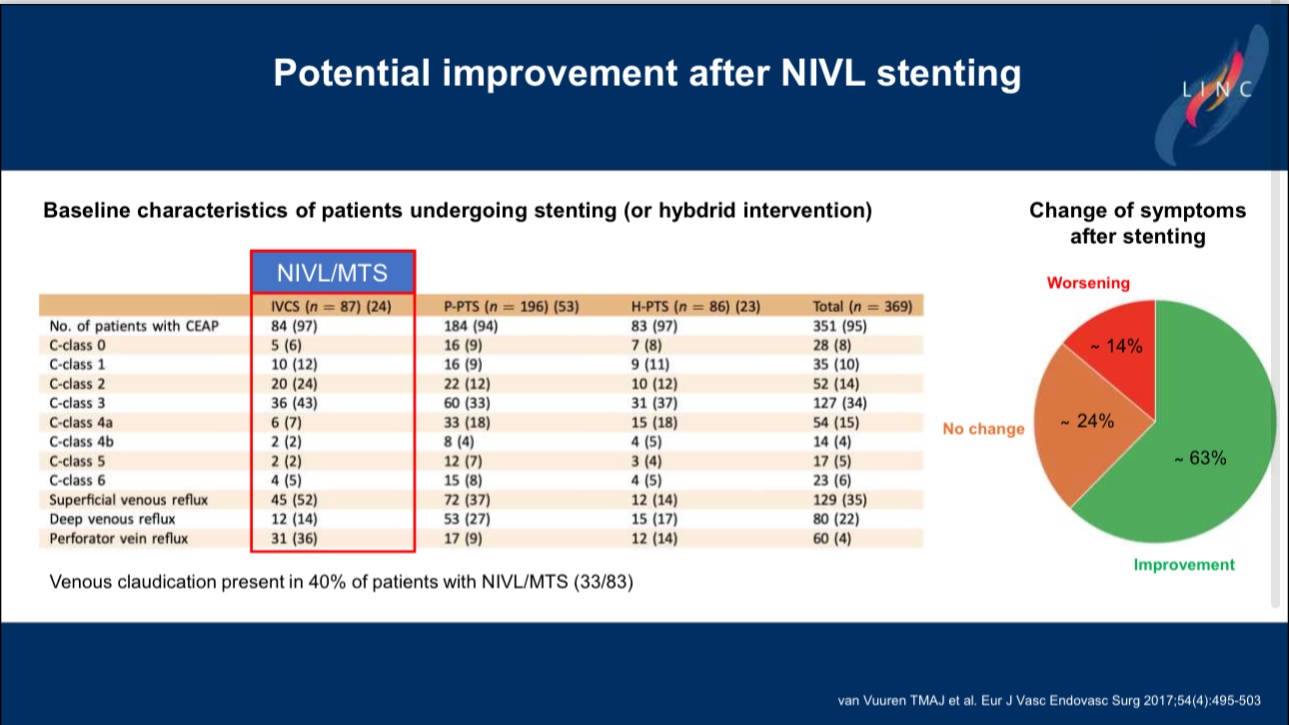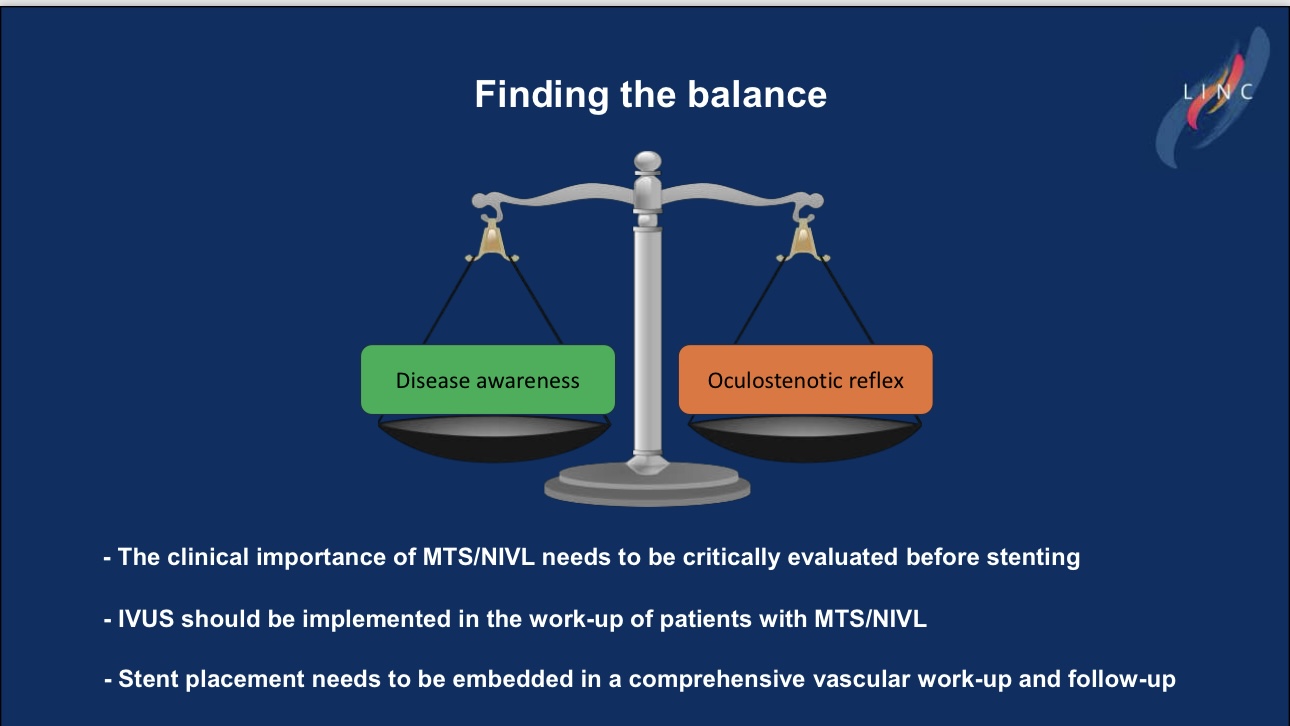Introduction
Dr. Oliver Schlager from the Department of Vascular Surgery at the Medical University of Vienna presented a comprehensive discussion at LINC 2024 on May-Thurner Syndrome (MTS), focusing on the timing and necessity of interventions for MTS patients. The presentation explored the role of intravascular ultrasound (IVUS) in determining the appropriate course of action and the criteria for stent implantation.
Key Points
1.Pathophysiology of MTS:
•MTS occurs due to the compression of the left iliac vein by the right iliac artery, leading to impaired venous outflow and an increased risk of deep vein thrombosis (DVT). The syndrome is categorized into three types: lateral, central, and partial occlusion.

2.Role of Imaging:
•IVUS as the Gold Standard: IVUS plays a critical role in visualizing venous compression and thrombus formation. It surpasses other imaging techniques, such as magnetic resonance venography (MRV) and computed tomography (CT) angiography, by offering a more detailed assessment of iliac vein narrowing and potential thrombus.
•Comparison with Other Techniques: Although MRV and CT can be useful in diagnosing MTS, IVUS is superior in terms of accuracy, particularly in determining the severity of the venous stenosis.

3.Intervention Criteria:
•Not all MTS cases require immediate intervention. Treatment decisions are based on the severity of the stenosis, symptoms, and imaging results.
•Stent Implantation: For cases where iliac vein stenosis exceeds 50% or when there is thrombus formation, stent implantation is considered an effective treatment option. This procedure restores venous patency and reduces the risk of recurrent thrombosis.

4.Clinical Case Studies:
•Case 1: A 35-year-old female patient with leg swelling and pain was diagnosed with MTS. IVUS revealed 60% iliac vein stenosis, and the patient underwent successful stent implantation with significant symptom relief.
•Case 2: A 50-year-old male with chronic venous disease and a history of DVT was found to have over 70% iliac vein stenosis. IVUS-guided stenting resulted in long-term patency and symptom resolution.

Conclusion
May-Thurner Syndrome is a common but often underdiagnosed venous condition. IVUS plays a crucial role in the diagnosis and treatment of MTS, providing accurate imaging to guide interventions. For patients with significant stenosis or thrombus formation, early intervention, including stent implantation, is an effective strategy to improve symptoms and prevent complications. Treatment decisions should be individualized based on the extent of the disease and patient symptoms.

Contact Us
For submissions, please contact us at: endovascluar@simtomax.cn
Thank you for your attention, and let’s continue to safeguard health together!
More international information available at:
•Facebook: Vasco Knight
•Instagram: knight_vasco


